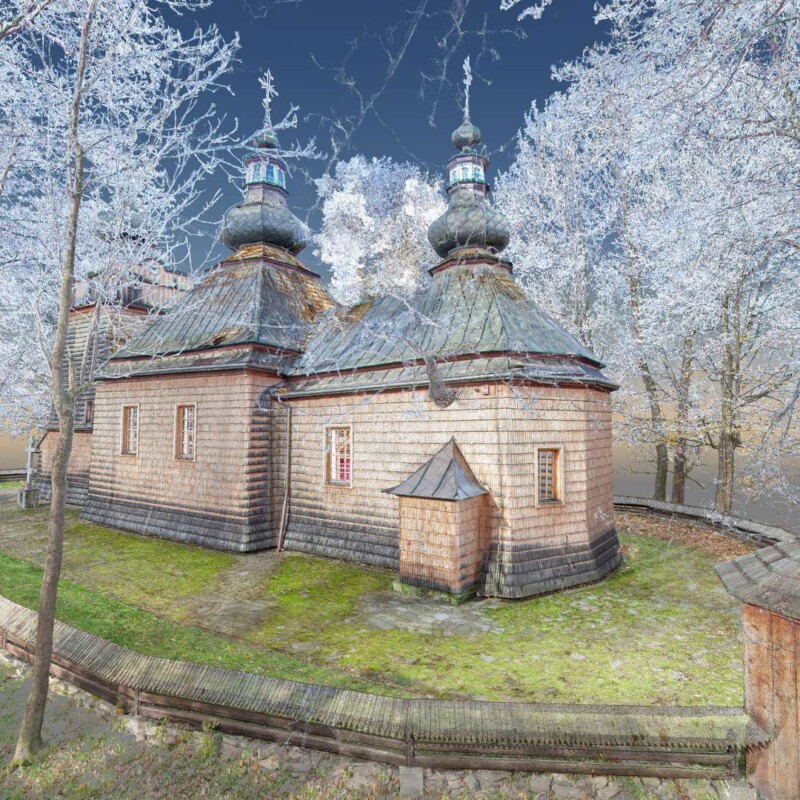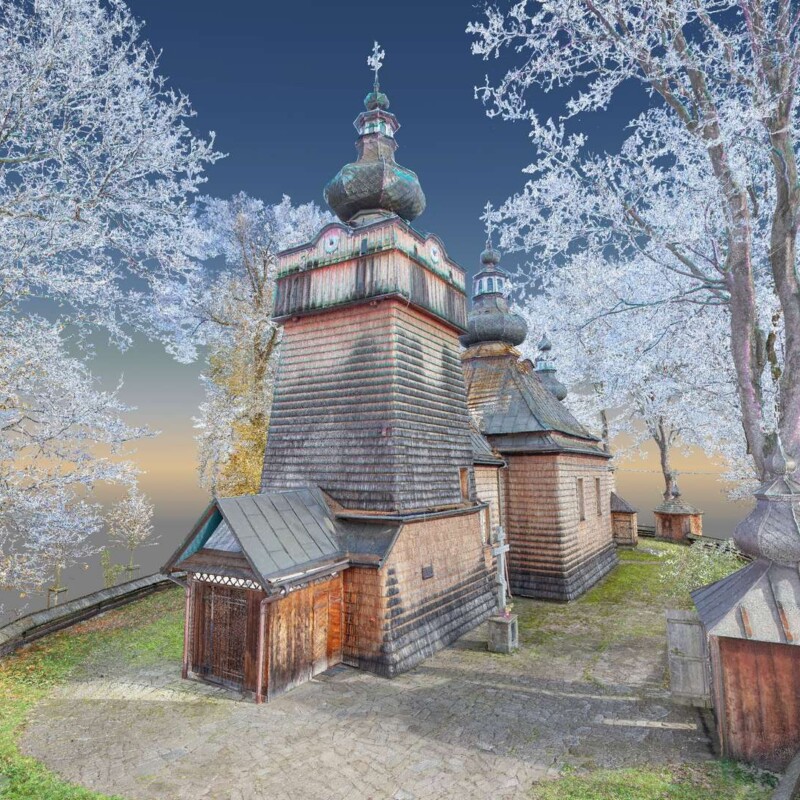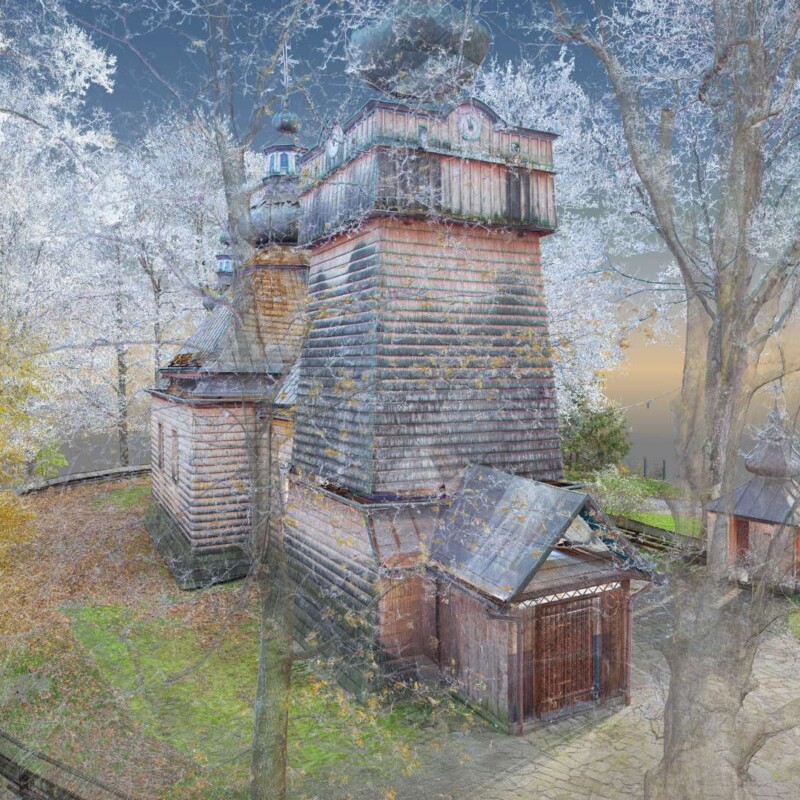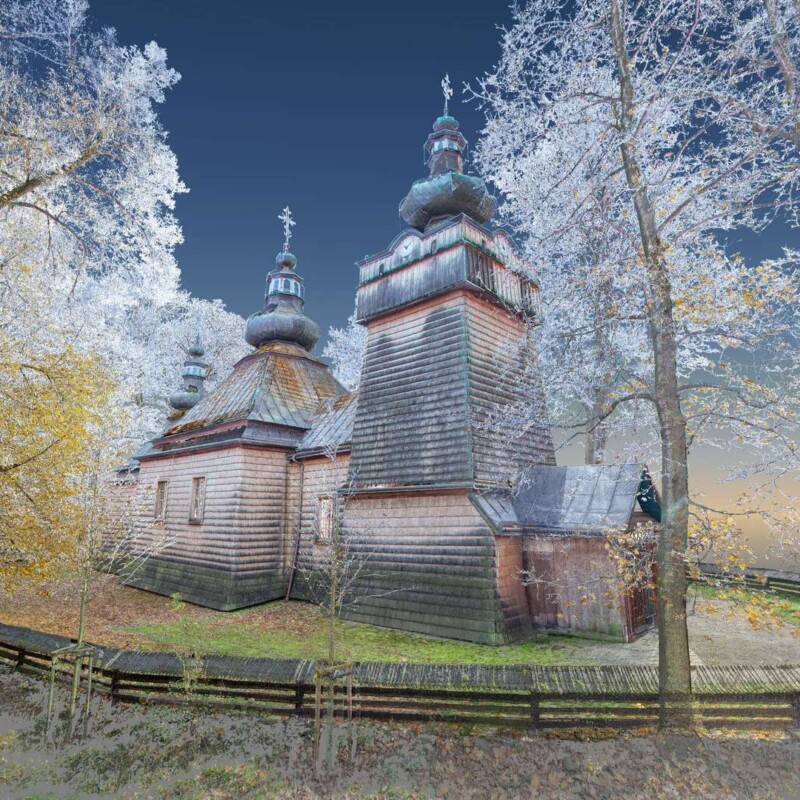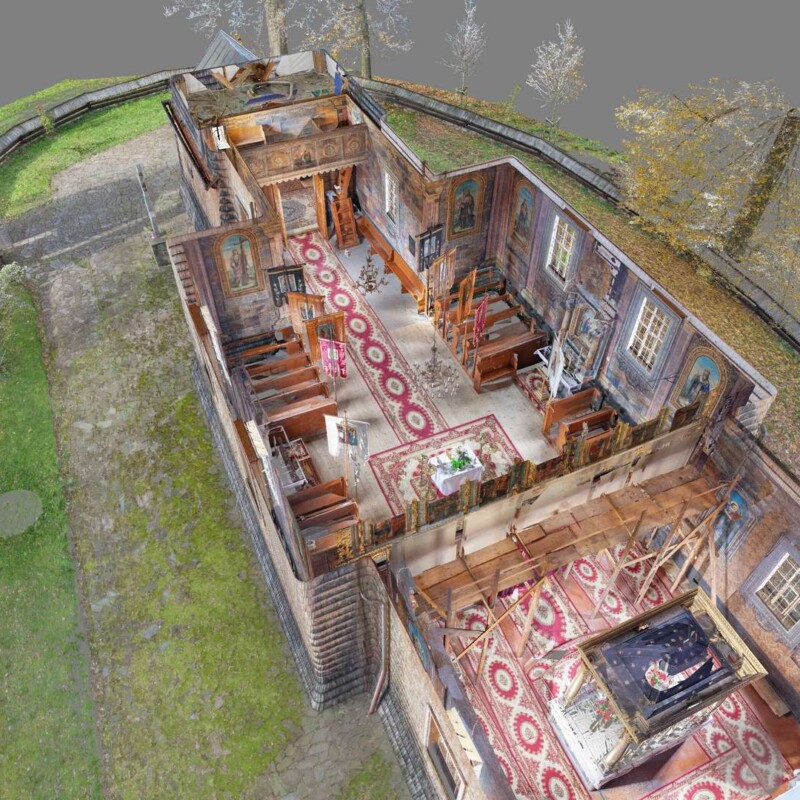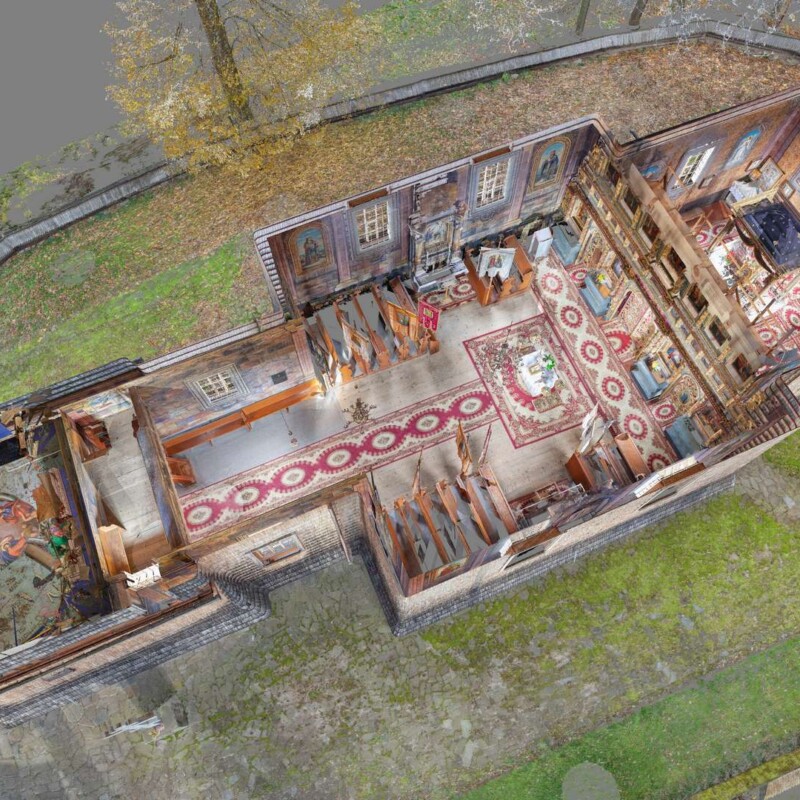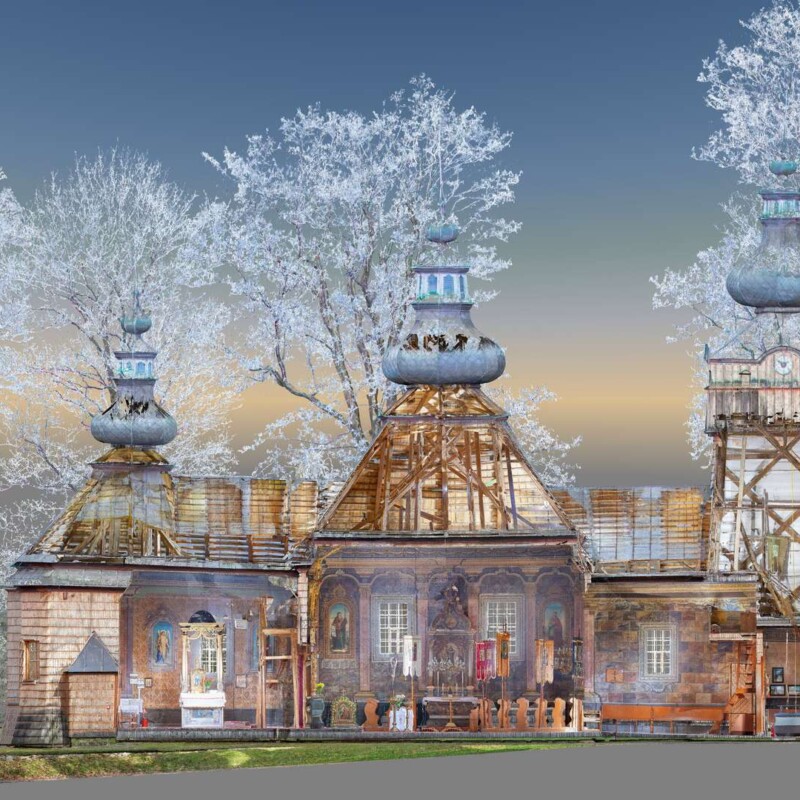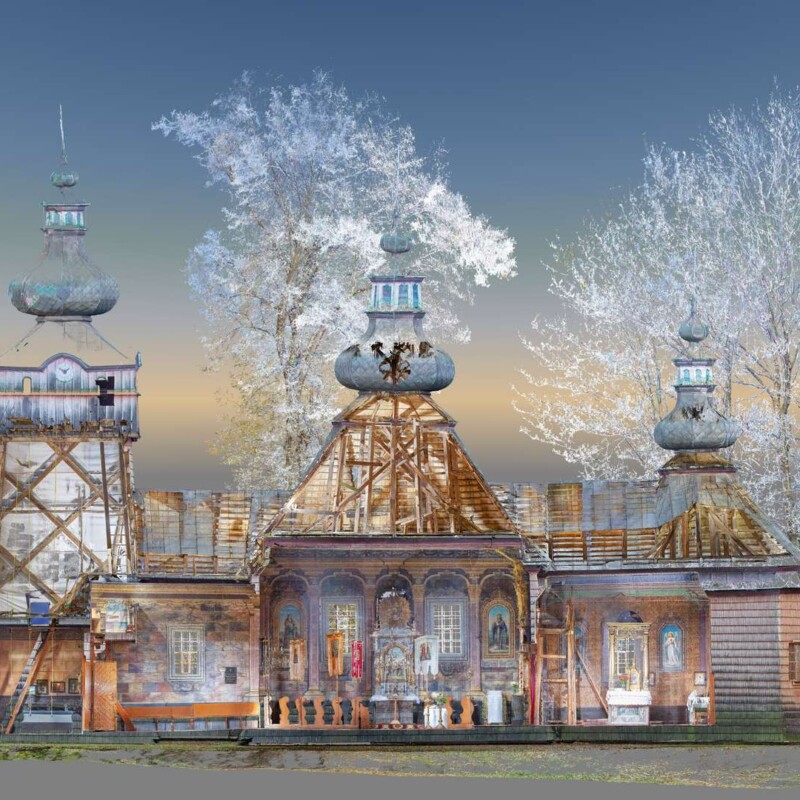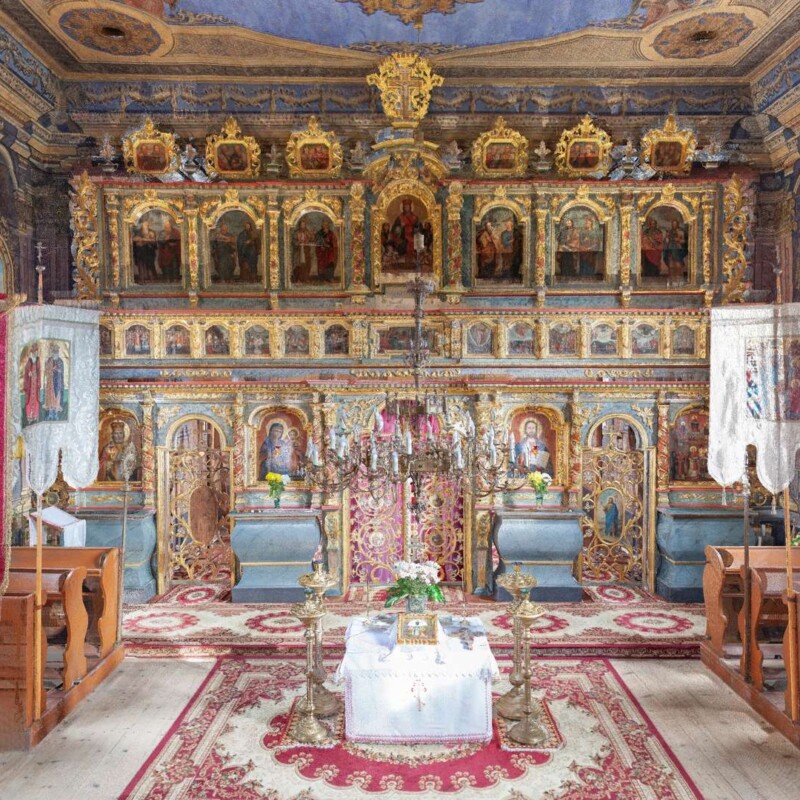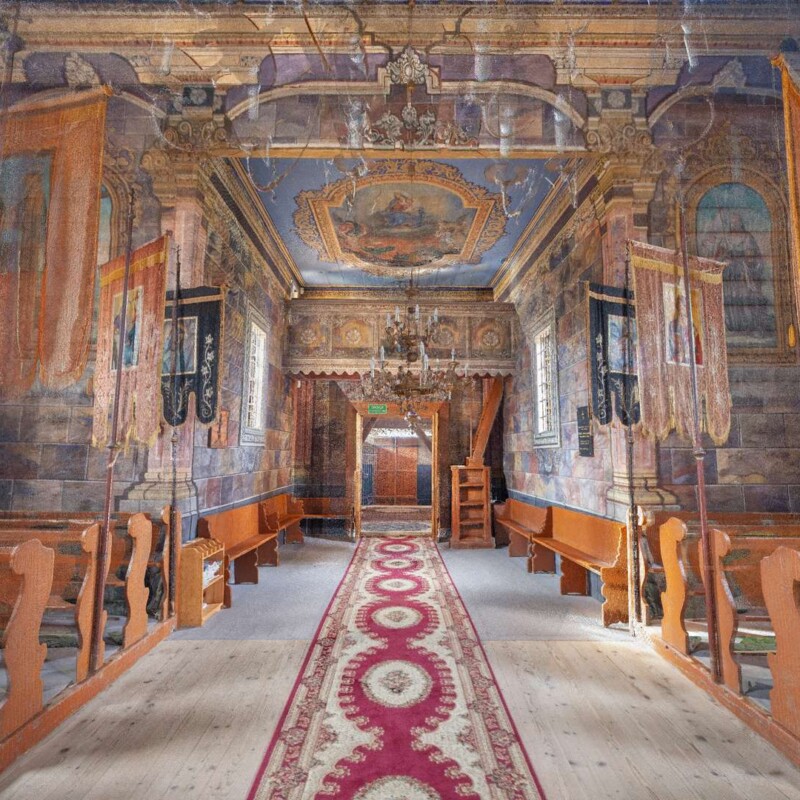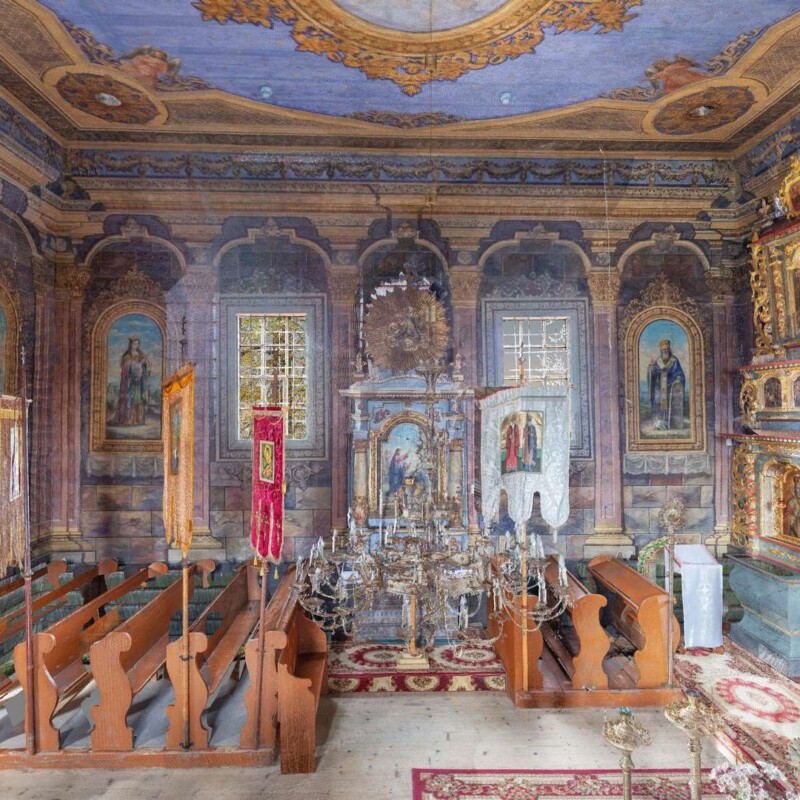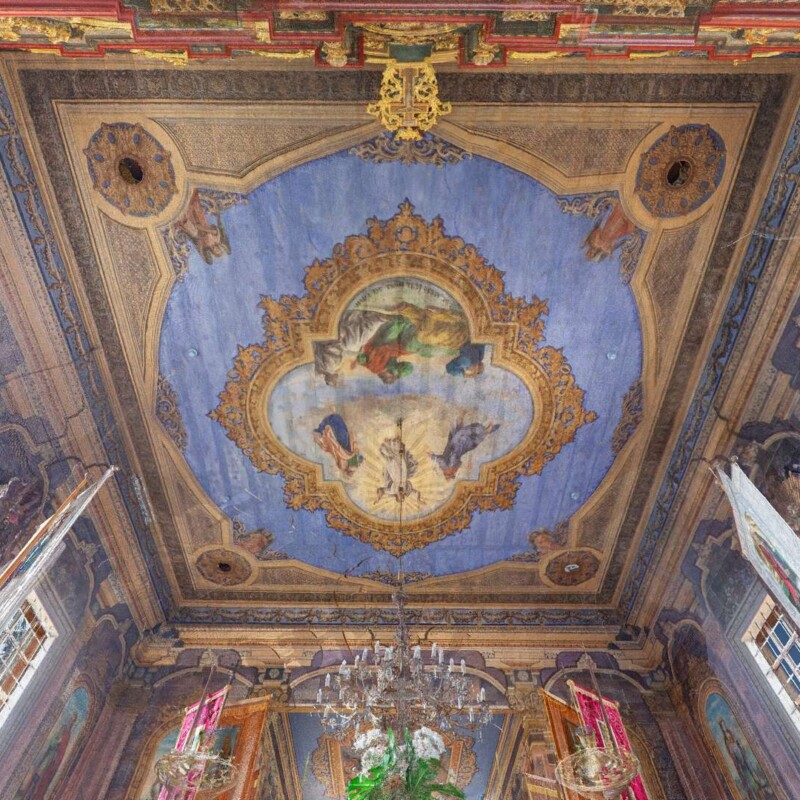Orthodox Church of the Protection of the Mother of God, Hančová
The Orthodox Church of the Protection of Our Lady in Hančová is one of the most impressive examples of wooden sacral architecture in this part of the Carpathians. The temple served Greek Catholics for about 250 years but has served as an Orthodox Parish Church since 1958. Hańczowa is situated in the valley of the Ropa river, between Uście Gorlickie and Wysowa. The village is thought to have been first settled in the 15th century. The majority of its inhabitants were Ruthenians, who with time started to be called Lemkos. Originally, they subscribed to the Orthodox Church. However, after some of the Orthodox bishops signed the act of union with the Catholic Church, they became Uniates, also known as Greek Catholics since the end of the eighteenth century.
The Church of the Protection of Our Lady was built in the first half of the 17th century as an Orthodox church, as evidenced by a foundation plaque dated 1644 and bearing the name of “Lazar Hancowsky”, probably a carpenter. The church was thoroughly repaired and rebuilt in the second half of the 19th century. The Uniates worshiped in the church until 1947. Then all Lemkos with the exception of one family were expelled by the communist authorities of People’s Poland from their native village to what were called the Recovered Territories. The building probably stood on the site of an earlier church. Its existence is evidenced by a fragment of a beam bearing the date 1644 and the name Lazar Hancowsky found during renovation.
The Uniates prayed in the church until 1947. It was then that most Lemkos were expelled from their homeland by the communist authorities of People’s Poland and resettled in what were called the “recovered territories”. At first, the abandoned church was used by Roman Catholics. Eventually, it became an Orthodox church. The church is oriented, meaning that the chancel with the altar points to the east, where it is believed the Saviour will reappear at the end of time. A wide nave, intended for the congregation, connects with the chancel. Behind it, on the west side, there is a babiniec, where only women used to gather. Above the vestibule that precedes it, rises the tower, which may be the oldest surviving element of the building, dating back to the 17th-century.
The walls of the church were built in a log construction. The beams were laid horizontally and joined in the corners. The tower, on the other hand, has a timber frame construction. It is supported on vertical posts, which are reinforced with horizontal and diagonal beams. The decoration and furnishings of the church come mainly from the 18th and 19th centuries. Particularly interesting are the paintings that cover the walls and ceilings. The original iconostasis is particularly eye-catching. It is a wall separating the nave from the chancel with a number of icons. The side altars, the altar in the chancel and the flags are also worth a look.
Application – a virtual walk around the church
The church in Hańczowa consists of a chancel, sacristy, nave, babiniec, vestibule and porch. It is about 22 metres high and 34 metres long. Its widest point is the nave – at this point the mass is 10 metres wide. Each part of the church is covered with a separate sheet metal roof. Three onion-domed cuppolas topped with crosses rise above the roofs. The tower stands over the vestibule. It is crowned with a slightly wider, cube-shaped chamber known as the izbica, which is covered with vertical timber cladding. Clock faces are painted on the upper edge of the walls.
The walls of the church are covered with shingles. These are small overlapping wooden tiles. They have the light brown colour of natural wood. The interior of the church impresses with its ornate decoration. Light streams in from both sides through the rectangular windows, bringing out the colours of the paintings decorating the walls and ceilings. Many of the motifs imitate three-dimensional decorations. This procedure is called illusionism. The ceiling of the nave, for example, is surrounded by a painted cornice, all of which forms the background, in the middle of the ceiling, for a wide painted golden carved frame. It contains a scene of the Transfiguration of Christ with six figures. The Apostles Peter, James and John are dressed in white, blue, yellow and red, green robes. They are lying on the ground. They cover their eyes from the glare emanating from Jesus, floating above them in a white robe. At his sides he is accompanied by Moses and Elijah in dark blue and red robes. A luminous cloud surrounds them.
Between the nave and the chancel rises a wall entirely full of icons, known as an iconostasis. The iconostasis contains four horizontal rows of icons. These are religious pictures painted on wooden boards. The first row from the bottom are icons of the most revered saint of the Lemkos – St. Nicholas, and the Mother of God with Child, Christ teaching with The Gospel and an icon referring to the name of the temple. In this case it is an icon under the title Protection of the Mother of God, or – Pokrov. This is the veil with which Mary protects the faithful gathered around her.
At the level of the first row, the iconostasis contains three doors. The middle one is the Tsar’s Gate, through which only Orthodox clergymen can pass. Only Orthodox nuns and men of the Orthodox faith who serve in the church – altar servers, lectors and church stewards – can pass through the diaconate doors. The wings of the door have the shape of a highly ornamental gilded lattice. It is made of winding vine branches. They have the shape of a highly decorative gilded lattice formed of winding vine branches. The second row shows the Last Supper in the Upper Room and the most important feasts of the Orthodox Church. In the middle of the third row is Christ Almighty together with the Mother of God, John the Baptist and angels. To the right and left are icons of the 12 Apostles. This row is called Deesis, or Intercession. The fourth row contains the Crucifixion scene in the centre. On either side of it are images of the 12 Old Testament prophets and patriarchs. The icons are surrounded by richly carved, gilded frames.


